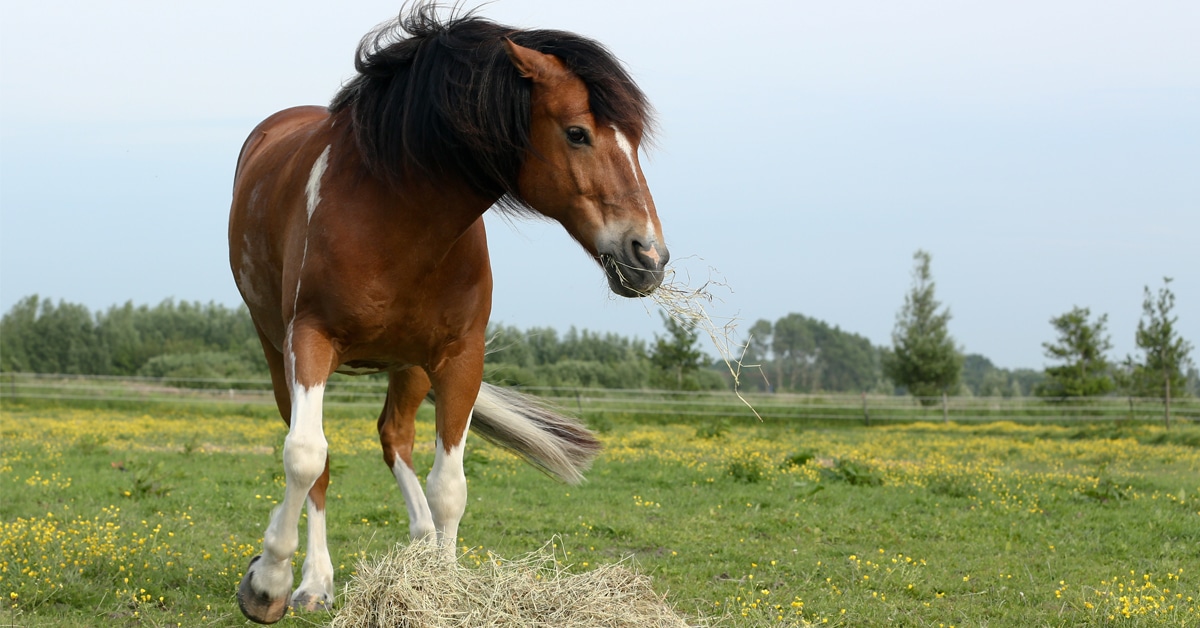If you are a horse owner and have never been confronted with a hoof abscess, odds are that sooner or later you will. Your horse might only experience a mild “offness” or he may be so sore he cannot walk at all. Sometimes you won’t even know your horse had an abscess until your farrier finds the evidence of a pus pocket during a regular trim. Some horses only develop an abscess once or twice in a lifetime; others can have chronic problems for months or even years. In either case, hoof abscesses are often extremely painful for the horse and cause no end of frustration for owners and riders.
The good news is that when caught early, abscesses will respond well to treatment. The bad news (as demonstrated by the accompanying case photos) is that the road back from an untreated abscess can be long, painful and expensive. Unfortunately, farriers and other horse care professionals are seeing an increase in cases of hoof abscesses as horse properties shrink in size and pasture management practices struggle to keep up with larger numbers of horses per acre. Sometimes prevention in the form of excellent pasture and farm management can save months of pain and frustration for both horse and human.
ABC s of Abscesses
Abscesses are infections of the sensitive areas of the hoof, which often occur when bacteria has penetrated the protective outer layers of the sole and lamina. Bacteria can work its way into the sensitive areas through weaknesses within the laminae, or more directly through some type of wound. Small cracks in the sole or separations in the laminae are rarely noticed, as they are too small to be painful, but the resulting infection triggers an immune response in the horse’s body to attack the invaders with white blood cells. A large buildup of white blood cells, dead tissue, and dying bacteria creates a pocket of unpleasant-smelling grey or black fluid around the infection. Medically known as purulent material, it is more commonly known as pus.
Since the sensitive structures of the hoof are encased in a very thick, dense, hard skin (the hoof wall and sole), the build-up of pressure in the pus pocket sometimes creates excruciating pain. (To illustrate: imagine filling a water balloon inside a hard container. The balloon will spread and grow in the path of least resistance.) In the case of a hoof, this can cause damage or destruction of laminae or solar corium (which covers the solar part of the coffin bone and is responsible for producing the sole), in turn weakening supporting structures such as the hoof wall itself.
As the pus pocket grows, like the water balloon, it pushes its way to the weakest point to exit. While it might seem that the weakest point would be the point of entrance, in fact, that entry point can seal up with dirt, allowing the bacteria to multiply inside and the pus pocket to grow to battle the invading bacteria. With the entry point sealed, either enough pressure needs to build up to blow it open, or it can work its way upward through the laminae to exit through the skin at the hairline. Quite often it will grow under the sole as well.
Symptoms of a hoof abscess may include a sudden onset of lameness, often seemingly overnight, a reluctance to bear weight on that foot, and a tendency to walk on the toe. Heat in the hoof may be noticeable, along with an increased digital pulse. In abscesses that take a longer time resolving, there might be swelling of the limb as high as the knee, painful tendons, and even fever.
Environmental Causes
There are other factors involved in creating abscesses as well. Weather and environment can be big contributors. A warm, wet environment is a perfect place for bacteria to grow, as wet footing softens the structures of the hoof immensely. Farriers often refer to early spring and fall as “abscess seasons.” Occasionally, after a prolonged dry spell we experience a period of rain; even only a day or two is enough to soften a hoof and spawn a blooming of bacteria.
Any object capable of penetrating the sole – for instance, a sharp rock or a lost nail – can create the entrance point for a bacterial invasion. A piece of sand can penetrate weakened, stressed or damaged laminae, allowing bacteria to follow. This type of infection usually results in a pus pocket that pushes its way up to find an exit at the coronet band. This is commonly called “gravel.” This type of abscess was a common problem with coach horses extensively travelling dirt roads in years past.
A deep bruise that results in a blood pocket can become a mysterious and very painful abscess. Often the bruise is internal and not noticed. The dead coagulating blood of the bruise becomes a foreign object to the body and white blood cells are sent to attack it. With no entry point, the pressure buildup must be that much greater to create an exit. These types of abscesses are thankfully rare.
Treatment
Treating abscesses involves soaking and poulticing. Soaking with hot water and Epsom salts helps to soften and weaken the sole as well as clean it to allow a faster exit of the pus. Since we can’t stand guard in the barn all night while the horse’s foot soaks, we poultice it. An effective choice is a bran/hot water/Epsom salt poultice, which is basically a continuation of the soaking using bran as a base to hold the water, salt and heat. This is wrapped in plastic bags and loads of duct tape, unless you have a proper hoof boot.
Other mud poultices are good, but sometimes the clay in the poultice seals shut the exit point you are trying to open. Animalintex® is great; however, it will draw the external bacteria from the surface of the foot, incubate it overnight and leave a nice black goo on the pad in the morning. This does not mean that you drained the abscess or that it broke in the night; it simply means that you drew out bacteria, likely from the grooves beside the frog.
Some difficult abscesses may require antibiotic treatment, so consult a veterinarian who may put the horse on a regimen of oral, topical, intravenous or intramuscular antibiotics. Also ask about when and how to use painkilling anti-inflammatories (e.g., Phenylbutazone), which can be used to help reduce the swelling and pain level, but may prolong the process of the abscess.
Farriers are very skilled at locating abscesses and should know your horse’s foot intimately. Should the suspected damage be affecting structural support, your farrier can work proactively by shoeing or trimming to lessen the stress of the area and prevent further damage.
Prevention
All horses are susceptible to abscesses. Horses that have experienced laminitis are at a much higher risk of infection due to weakened laminae. Distortions in hoof structure, cracks, or injuries of the hoof also increase risk of infection. If the horse has an injury anywhere in the sole, that’s pretty much a guarantee of infection, regardless of how well you treat the wound. Wounds can heal and an abscess can result a month or two later in the same area.
Horses in wet or fluctuating wet/dry environments are always at higher risk of developing hoof abscesses. Prevention means keeping clean, dry stalls and clean, dry paddocks. Pastures housing a number of horses will have an increase of muddy areas around gates and feeding areas, as well as a much higher bacterial count in the soil.
Maintaining a proper population of horses to each paddock according to size is important. Many municipalities, townships and counties actually have bylaws limiting the number of large animals per acre. While most of these bylaws are generally not enforced, they actually have merit and horse owners seeking guidance on pasture management should consider checking out the recommendations of animals per acre in their area. Although a working standard is no more than one horse per acre, this can vary depending on soil type and other environmental factors.
Paddocks and stalls that are free of debris will prevent the chance of a puncture. Those lost nails from building fences, stones, sticks and the elusive lost horseshoes all have the potential to make the tiniest of entry points for infection. Avoid riding on rocky terrain as well. If riding in areas with lots of small stones, gravel and other small hard objects, make sure you thoroughly pick out your horse’s feet, including the white line area. It takes very little time for a small foreign object to work its way into the weaker or softer areas of the hoof.
Watching your horse experience the pain of an abscess can be traumatic. However, abscesses are common, many can be prevented and most are simple to cure if you get your farrier and your vet in the loop early.
Kevin Alcock , BWFA Journeyman II, has been a full-time farrier for 26 years, as well as an active horseman breeding, raising, training and rehabbing horses at Brookdale Farm in Uxbridge, ON. Freelance writer Laurie Blake is an avid horsewoman, certified instructor and also a member of various equine associations, including the Canadian Pony Club.
The Latest










